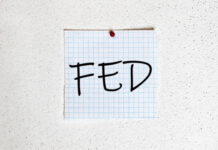Markets
The Norges Bank, the Bank of England and the Czech National bank all decided on interest rates in the wake of yesterday’s Fed decision. In our view, the Fed was rather balanced. Powell maintained the rhetoric that the Fed is not at the point yet of raising interest rates as the goal of maximum employment hasn’t been met. At the same time, he didn’t openly push back on market expectations for a lift-off in the interest rate cycle in the second half of next year. After a night’s sleep, markets clearly favoured a dovish interpretation of yesterday’s Fed storyline. Both US and European yields declined from the open. The BoE leaving its policy rate unchanged (cf. infra) only reinforced dovish market dynamics. (Second tier) eco data (higher US unit labour costs, lower than expected US jobless claims and higher than expected EMU PPI) evidently were ignored as was the case for a rebound in the oil price (Brent $83 p/b from the low $81). OPEC agreed to maintain the pace of its production hike at 400 000 bpd in December. Even so, yields are ceding up to 8/7 bps with the belly of the curve outperforming. German yields decline up 6.5 bps for the 2-j, 8.5 bps for the 5-j, 6 bps for the 10-j with the 30-j again the exception to the rule (1 bp). The decline was driven by real yields. Intra-EMU spreads also continued impressive narrowing trend from previous days with Italy again taking the lead (-6bp). The easing of global market conditions supported equities, but gains were not exceptional (up to 0.5% with the Nasdaq outperforming (0.9%).
The broader decline in real yields and the dovish reaction of interest rate markets post-Fed didn’t hurt the dollar. On the contrary; the US currency in Asia started a reversal of yesterday’s (modest) setback in this trend still continues. The trade-weighted index rebounds to test the 94.30 ST top, a last reference before key resistance in the 94.56/74 area. EUR/USD (currently 1.1550) is again nearing the 1.1530 interim support. USD/JPY is exception. The yen gains, albeit modestly (USD/JPY 113.65 from 114) on the decline in core yields. The BoE decision didn’t go unnoticed on FX markets. Earlier this week, sterling traders already shifted to a more neutral positioning ahead of the BoE meeting. Contrary to recent comments of BoE governor Bailey and Chief economist Phill on the need to arrest inflation, the BoE didn’t hike interest rates. Bailey and Co did take a rather soft stance on interest rate hikes. Current market pricing of 1.0% at the end of next year should already be enough to bring inflation back to target over the policy horizon, even if it might touch 5.0% in the spring of next year. Cable traded just below 1.37 at the open in Asia and currently nears the 1.35 area. EUR/GBP returned to the mid 0.8550 area.
News Headlines
The Norges Bank kept its policy rate as expected unchanged at 0.25%. Governor Olsen said that the policy rate will most likely be raised in December. The economic upturn is continuing broadly as expected while unemployment has fallen further. Higher economic activity and rising wage growth will likely lift underlying inflation, but the recent krone appreciation could curb the rise in prices. The Committee also noted that global supply chain disruptions could dampen the economic upturn and contribute to higher inflation in Norway. The Norwegian krone didn’t responds, trading stable (9.86) just below 9.90 resistance.
The Czech National Bank surprised again on the hawkish side of expectations by lifting its policy rate from 1.5% to 2.75%! The committee voted 5-2 with the minority in favor of inaction. The “forceful” rate increase is meant to return price growth to the 2% target in 12-18 months and anchor inflation expectations. The CNB indicates readiness to push through with increasing interest rates in line with the Autumn forecast. Annual monetary policy-relevant inflation is forecast to peak near 6.5% Y/Y in Q1 next year, before returning to 3.2% in Q4 2022 and 2.1% in Q1 2023. Czech growth is expected to remain strong at 3.5% in 2022 and 3.8% in 2023. 3M Pribor rate forecasts currently peak near 3.5% in Q1 2022. The Czech currency benefits with EUR/CZK dropping from 25.55 to 25.35. Key support stands at EUR/CZK 25.30. The CZK swap curve inverts further with yields rising by 7.9 bps (10-yr) to 17.5 bps (2-yr).












